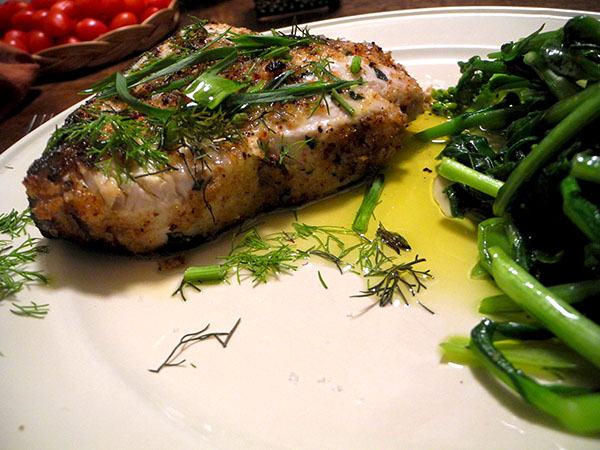
The swordfish was beautiful, and very fresh, as were the greens.
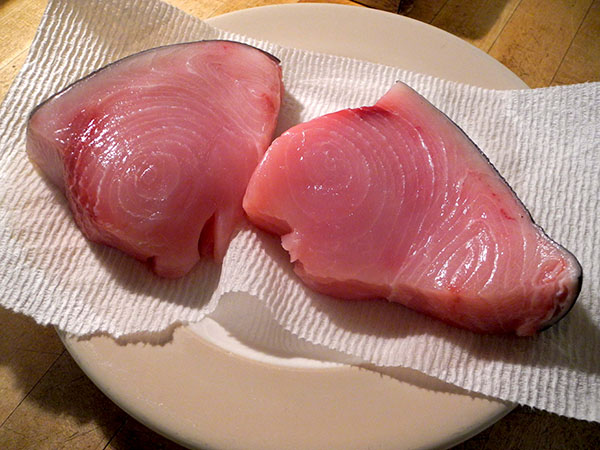
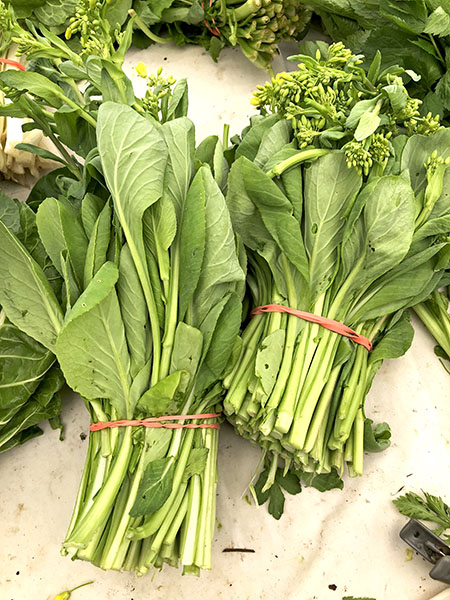
About that vegetable: Since there’s almost nothing to the cooking of greens, I thought I could take them pretty much for granted, and concentrate on the swordfish, and even the swordfish was also going to be prepared in a way I’ve done many times before.
The fish turned out very fine, and the greens, which were Komatsuna, a Japanese mustard spinach I’d not cooked before, tasted wonderful, but their larger stems were, well, let’s say, not easily chewed. The entire bunch, leaves and stems, had seemed very tender, but should I have stripped off the leaves on at least the larger stems? I would have had time, but it just didn’t seem necessary to me while I was chopping and washing them before their wilting, and how much vegetable would I have left after that if I did? Alternatively, Should I have just cooked them longer? I had the time to do so, since I was preparing them well before I had started to grill the swordfish, but I was thinking about spinach, which is a close relative to these greens, and I didn’t want them to reduce to almost nothing inside the pot before we had a chance to enjoy them.
Because I want there to be a next time, I’ll just have to remember what happened last night, and hope to make some kind of adjustment when I cook this delicious green again.
The swordfish looks something like a veal steak in the picture at the top, which is mostly the doing of a medium-high flame toasting my mixed assortment of homemade breadcrumbs, in which all shades of brown are represented.
But first came a marinade, which gave the steaks a very festive appearance while they were lying on the counter entertaining me for half an hour.
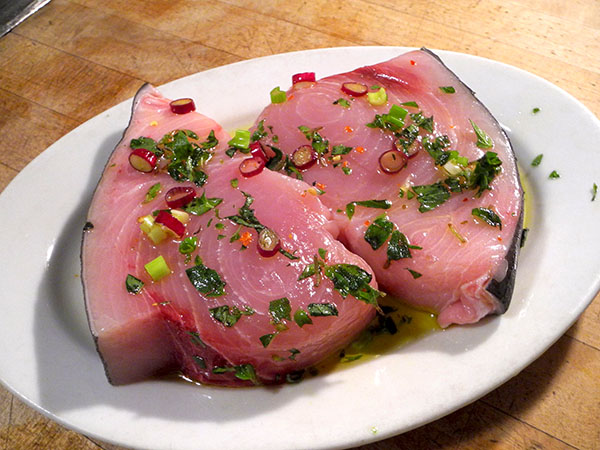
And at the end of their cooking there was a garnish of 2 different herbs, bronze fennel and young spring ramp leaves, but first both had to be washed and dried under a lamp on the counter, where they looked a bit like a botanical drawing.
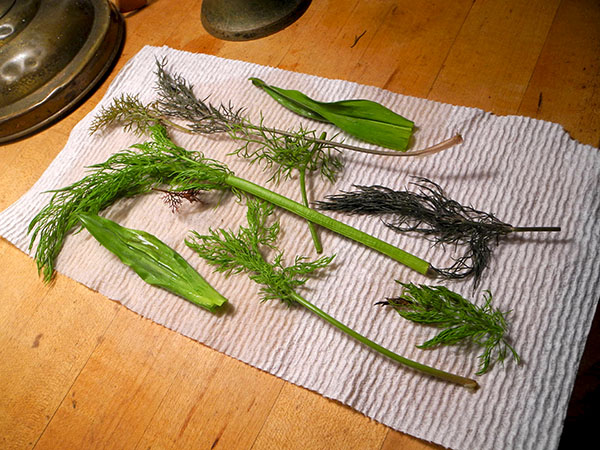
- two swordfish steaks (9 ounces each) from American Seafood Company), caught on the fishing vessel ‘Sharon G II’, out of Montauk Harbor, halved, marinated on an ironstone platter for more than half an hour, turning once, in a mixture of olive oil, a tablespoon of fresh oregano from Stokes Farm, a small amount of crushed dried peperoncino Calabresi secchi from Buon Italia, and a chopped section of a stem of purple spring garlic from John D. Madura Farm, then drained well, covered on both sides with a coating of homemade dried breadcrumbs, pan-grilled over medium-high heat for 3 or 4 minutes on each side, or until just barely fully cooked all of the way through (think of the texture of a fresh good cheesecake as the goal), removed, seasoned with a little Maldon sea salt, a bit of juice from a Whole Foods Market organic lemon squeezed on top, garnished with chopped bronze fennel from Norwich Meadows Farm and 2 leaves of a ramp from from Mountain Sweet Berry Farm, washed, dried, and thinly sliced, drizzled with a little Portuguese Whole Foods house olive oil
- thin slices of a loaf of Bien Cuit ‘Rye & Sunflower’, with white and dark rye, and roasted sunflower seeds, from Foragers Market
- one generous bunch of Komatsuna, a Japanese mustard spinach, washed and cut into 2-inch sections, wilted inside a large enameled cast iron pot in which one thick sliced spring garlic stem had first been softened in a couple tablespoons of olive oil, seasoned with sea salt and freshly-ground black pepper, drizzled with lemon juice and olive oil
- the wine was a Portuguese (Alentejo) white, Esporao Alandra Branco 2016, from Garnet Wines
There was a sweet!
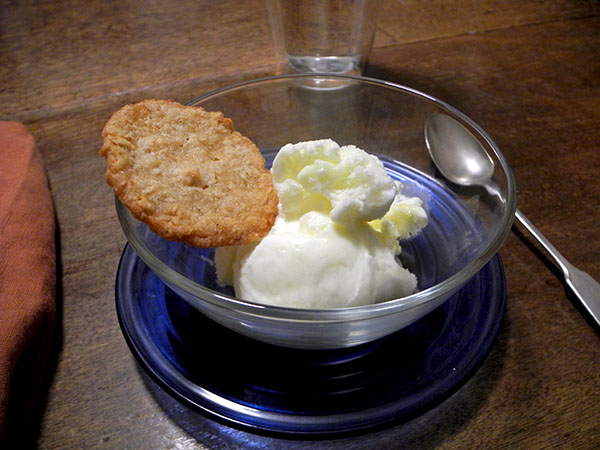
- a scoop of Limoncello ‘Naturally Flavored’ Italian Gelato from Whole Foods Market, served with ‘Sweet Oat Crisps‘ from Schaller & Weber
- the music throughout the meal was Hans Werner Henze’s first 3 symphonies, Marek Janowski conducting the Berlin Radio Symphony Orchestra